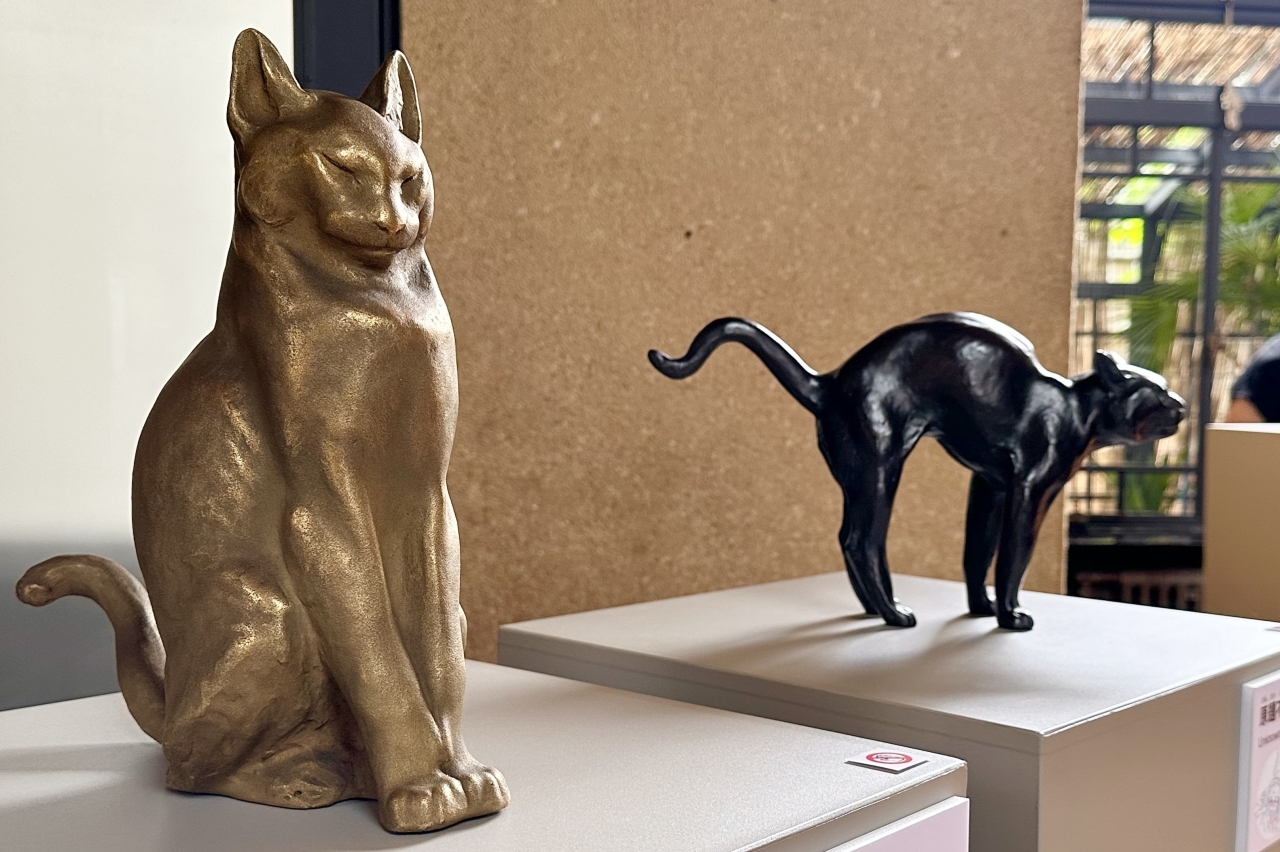Taito City Asakura Museum of Sculpture
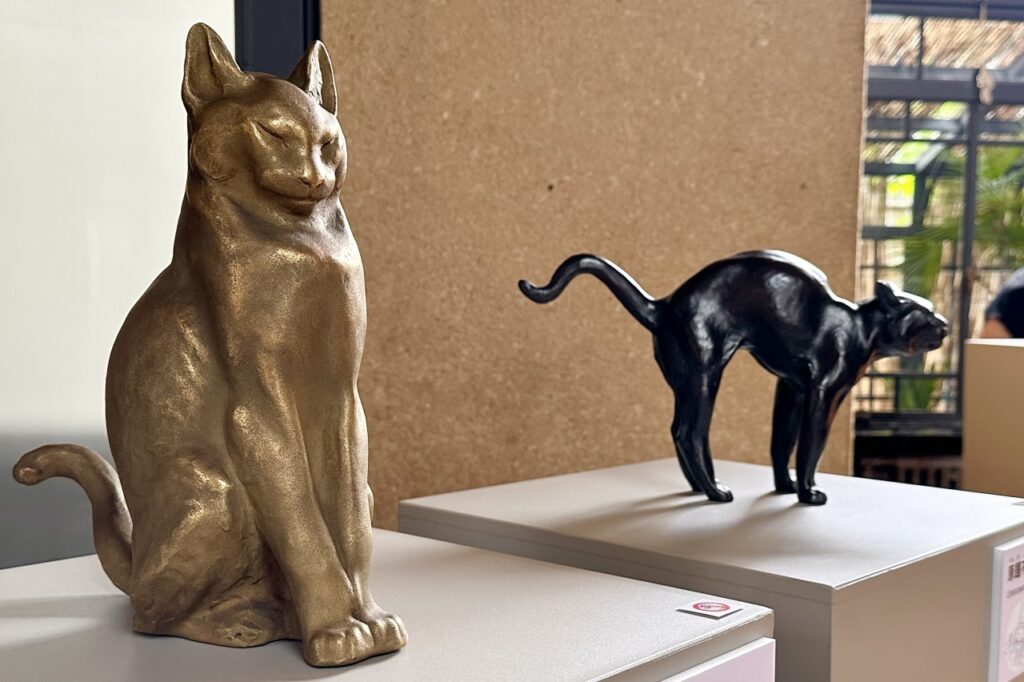
Fumio Asakura is a leading sculptor in the world of modern Japanese sculpture, and is also known as a cat lover. A special exhibition commemorating the 60th anniversary of his death, “Wonderful Cat Life: Fumio Asakura, Cats, and Sometimes Dogs,” is being held at the Taito City Asakura Museum of Sculpture, featuring a collection of his cat-themed sculptures. The exhibition will run until Tuesday, December 24, 2024.
*All works introduced are from the Asakura Museum of Sculpture.
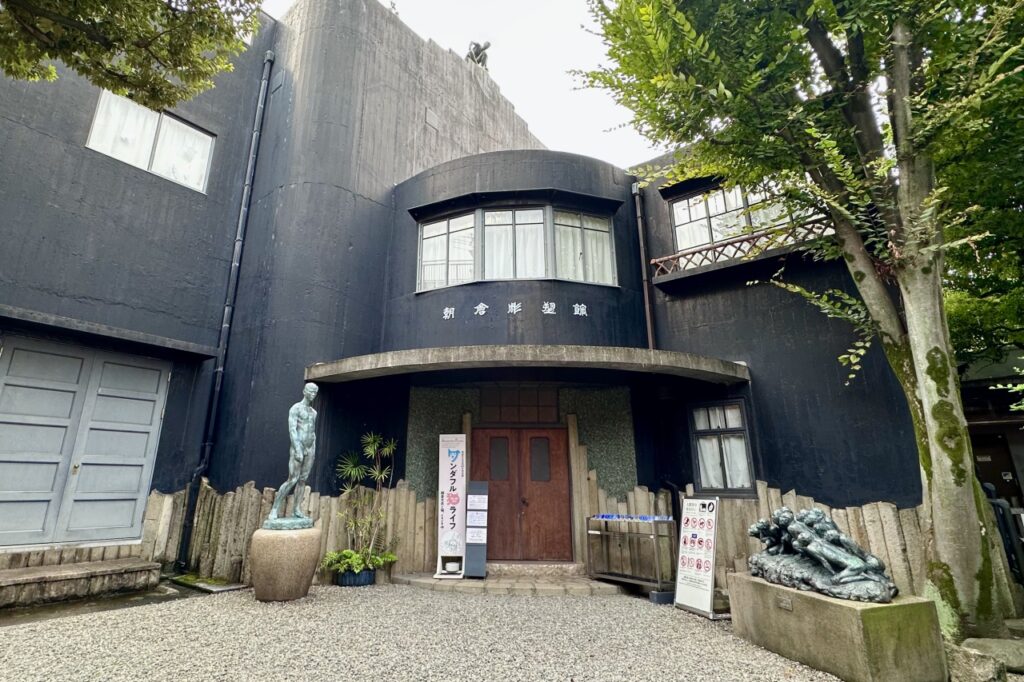
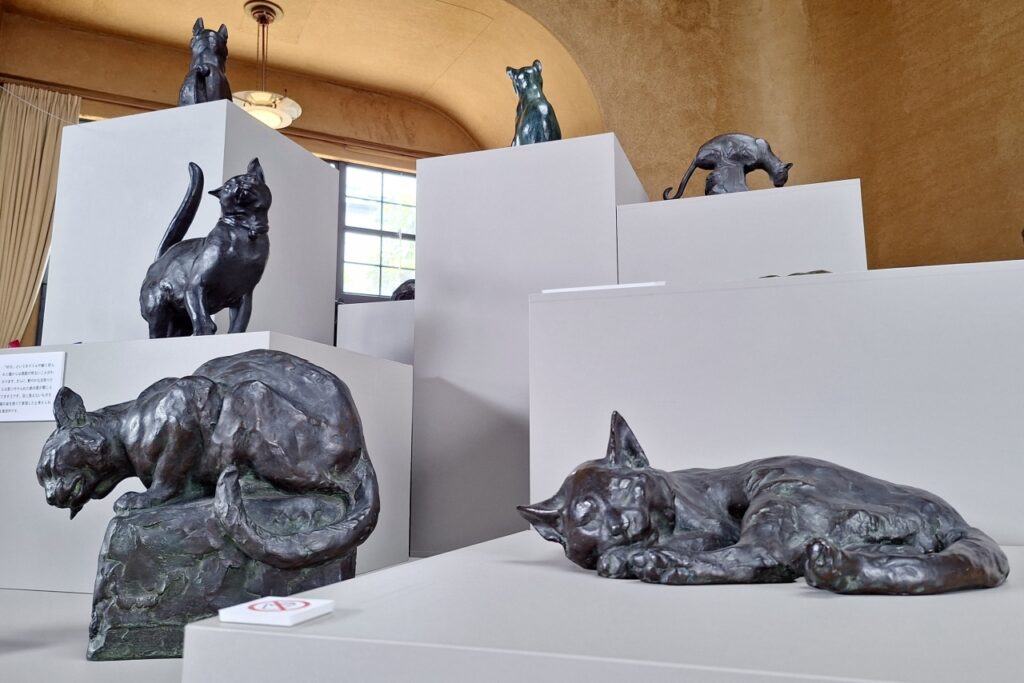
Sculptor Asakura Fumio (1883-1964) produced masterpieces of portrait sculpture such as Grave Guardian and Portrait of Okuma Shigenobu, from his thorough pursuit of “naturalistic realism” that captures the subject as it is, and in 1948 he became the first sculptor to receive the Order of Culture. In addition to his creative endeavors, he taught at the Tokyo School of Fine Arts (now the Faculty of Fine Arts, Tokyo University of the Arts), from which he graduated at the top of his class, and also devoted himself to nurturing the next generation of artists, presiding over the “Asakura Sculpture School” at the Asakura Museum of Sculpture, which was his studio and residence.
Asakura was also known as an avid cat lover, and at one time he kept as many as 19 cats in his mansion. He created cat sculptures almost throughout his life, sometimes using his pet cats as models. In 1964, to commemorate his 60th year as a sculptor and the Tokyo Olympics, he organized the “Cat in All Forms” exhibition, capturing the various poses of cats.
However, in April just before the Olympics, he passed away from illness at the age of 81, and the “Cat in All Forms” exhibition never came to fruition. The dream was carried on by those involved, and was realized as a special exhibition in 1994 and 2017 at the Asakura Museum of Sculpture, his final residence.
This special exhibition, “Wonderful Cat Life: Asakura Fumio and Cats, and Sometimes Dogs,” also focuses on cat-related works, just like the “Cats in All Forms” exhibition, but what differs from past exhibitions is the way it is displayed.
“Rather than just displaying our cat works, we took into consideration how Asakura spent his time here (at the Asakura Museum of Sculpture) with the cats and what their lives were like,” says Yasuko Tobari, chief researcher at the Asakura Museum of Sculpture.
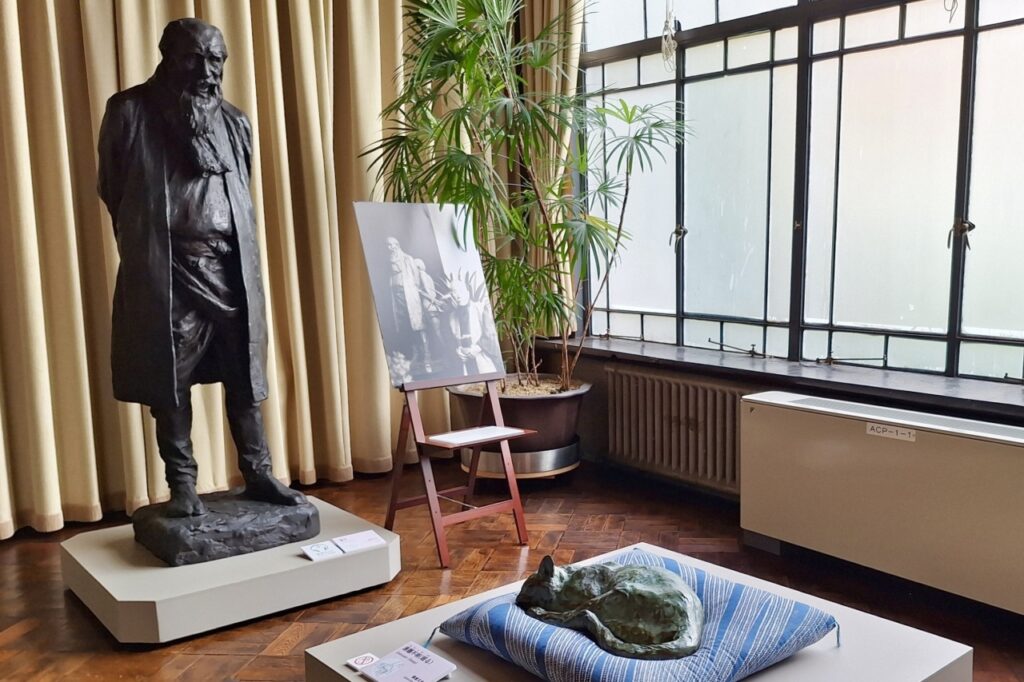
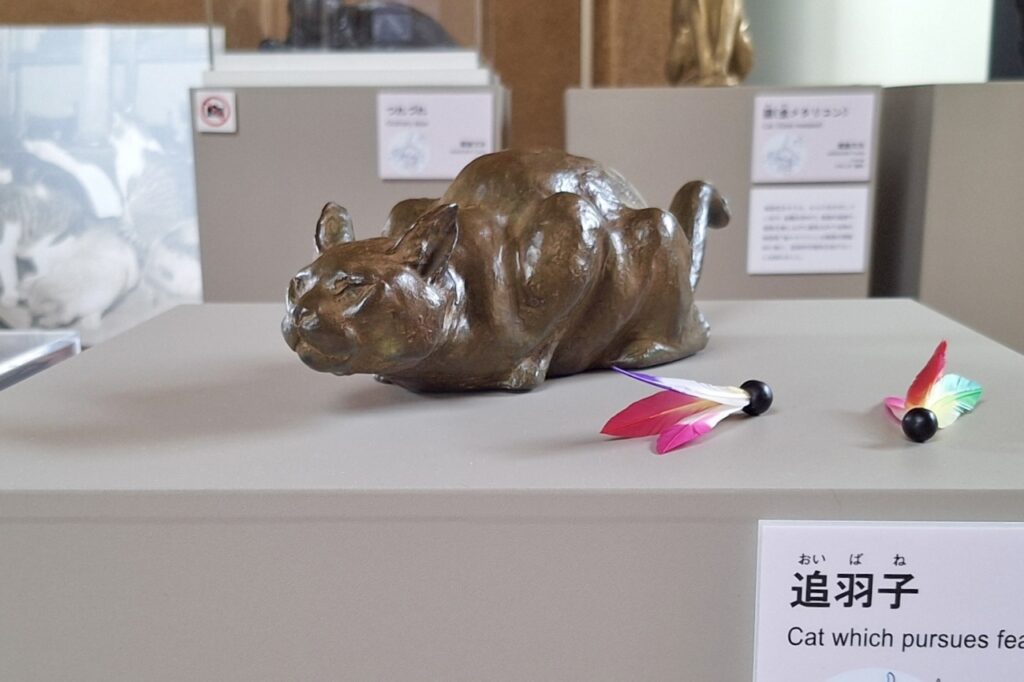
Although it is not widely known, Asakura not only had cats but also dogs. Although there are no works that use his beloved dogs as models, he did create a small number of dog-themed works, and by including these works, he aimed to make the exhibition more lively and easy to imagine what life was like in the past.
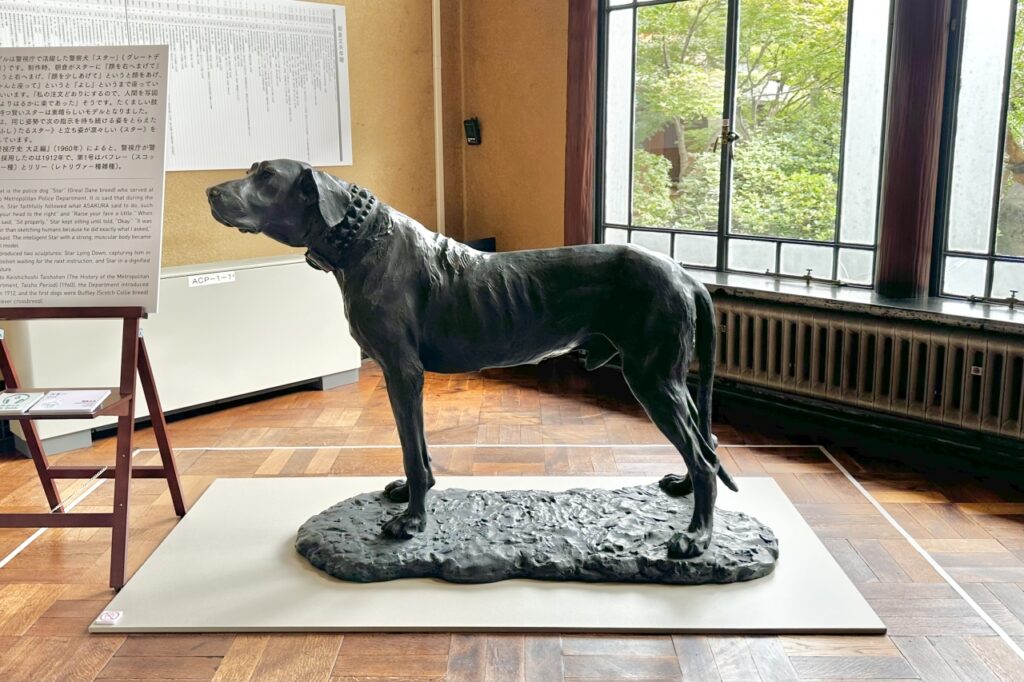
The exhibition will feature 53 works, including bronze statues of cats, as well as sketches of cats and handwritten haiku about cats. Photography, which was an important creative tool for Asakura, will also be on display.
As visitors enter the studio, the main exhibition space, the first thing that greets them is Hanging Cat (1909), the earliest cat work recorded to have been exhibited.

This work, which was exhibited at the 3rd Bunten Exhibition, had a novel composition for the time, and the highlight is the contrast between the strong arms that are pinching the cat’s neck and the cat’s relaxed, dangling body. The expression of the cat, which seems to want to say something, makes you smile. If you look closely, you can see that the cat’s hind legs are slightly tense, and you can feel the sharp observational eye and outstanding expressiveness that the young Asakura, who had just graduated from the Tokyo School of Fine Arts, already possessed.
According to Tobari, there is an anecdote in which Takamura Kotaro, a sculptor and outspoken art critic who was a friend of Asakura, praised the fact that Asakura had exhibited a small piece like this one, which depicts an ordinary day, at the Bunten exhibition.
“Up until then, Bunten exhibitions had often featured works that pursued the beauty of the human body or concrete human bodies expressing abstract themes, which were often exhibited as larger-than-life-size works. In this context, Takamura praised Asakura for treating the cat as just a cat. I think Takamura’s words gave Asakura confidence that even small pieces that capture everyday scenes like this could be considered works of art. This may be why Asakura continued to create cat artworks throughout his life,” says Tobari .

On the other hand, Takamura reportedly pointed out the stiffness of the expression of the arms in this work. Asakura took Takamura’s criticism seriously and created Arms (c. 1909), which was probably created in the same year, as a practice piece, since there is no record of it having been exhibited at any exhibitions.
In addition to Arm, the exhibition also features Hand (1918), created 10 years later by Kotaro Takamura. Asakura, who was collecting funds to study abroad, asked Takamura to create freely without revealing his identity, using words that echo his earlier criticism, such as “one hand, one leg.” Perhaps this alone struck a chord with Takamura, as he eventually realized that the request had come from Asakura. The exhibition gives a glimpse into the relationship between the two sculptors.
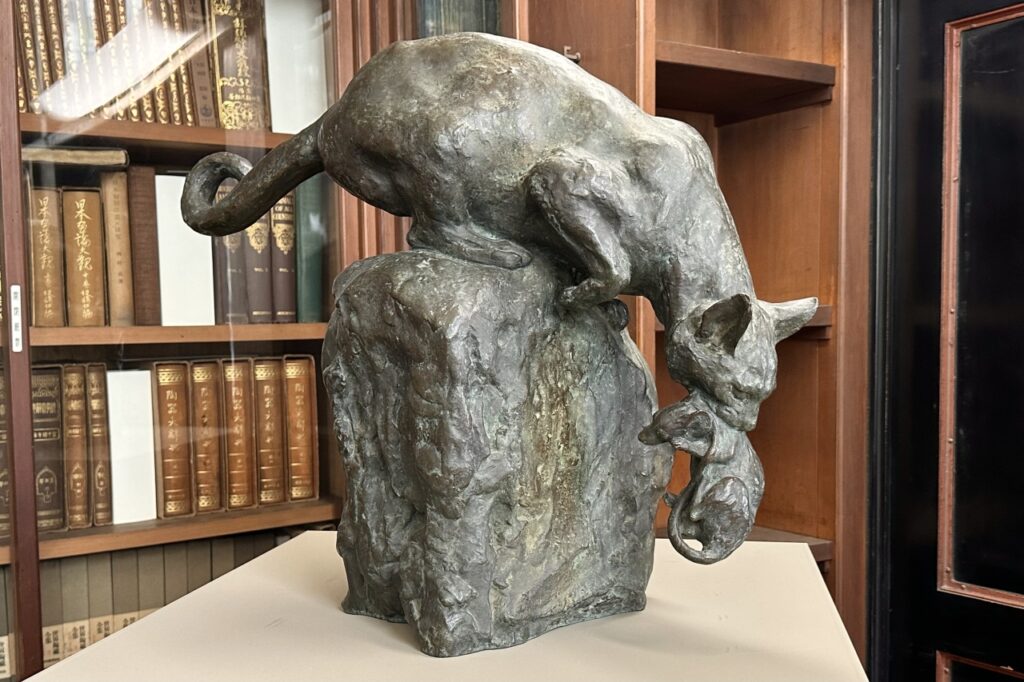
Moving our gaze to his later work, A Good Catch (1946), created about 40 years after Hanging Cat, we are astonished at the refinement of his technique. The stiffness of the muscles around the cat’s neck at the moment it bites the mouse, its ferocious expression, and the sense of balance of its front legs as it prepares for the mouse’s resisting movement. The realism of the work, which makes it easy to imagine the cat jumping down afterwards, is as if it were a mold of the cat at that exact moment.
Asakura, who loved everything about cats, including their whimsical movements and temperament, was also very interested in the skeleton that creates the unique, graceful movements of cats. Of course, he studied skeletal specimens, but Tobari said, “Asakura’s daughter said that Asakura always put cats on his lap and stroked them, not just to pet them, but to explore and confirm the structure of their skeletons and muscles.” This is an episode that is full of Asakura’s unique style, who pursued strict realism.
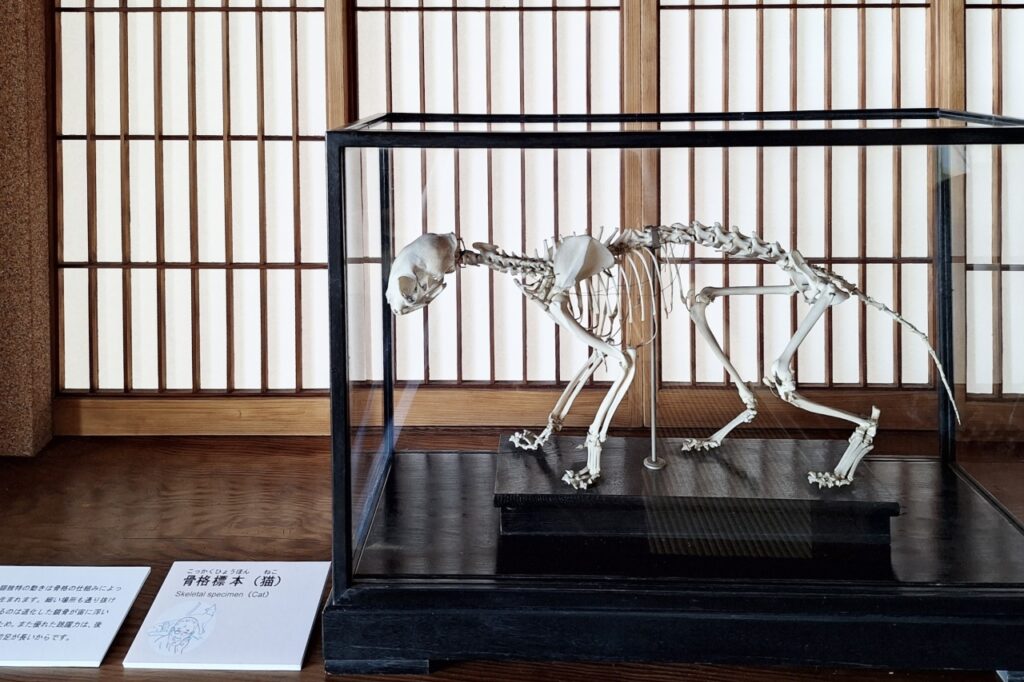
Even in the same sleeping pose, cats can be depicted with their heads buried in their front paws or with different ears and tail shapes. There is also a wide variety of cat poses, such as stretching, feeding kittens, and kittens snuggling up to each other.

At first glance, the work Postpartum Cat (1911) appears to be simply sitting, but it depicts the scene when Asakura returns home after an inspection tour of the South Seas and is greeted by his pet cat, who had just given birth two days earlier. The cat is looking tired and bowed.

Asakura was inspired to create this work by her beloved cat, who was clinging to her lap as if to express her fatigue from childbirth and the joy of the birth of her kitten. When asked why there are more detailed deformations in this work compared to her other cat works, Tobari said , “I think I was trying to capture the cat’s emotions, its tiredness and joy, rather than the cat’s appearance.”
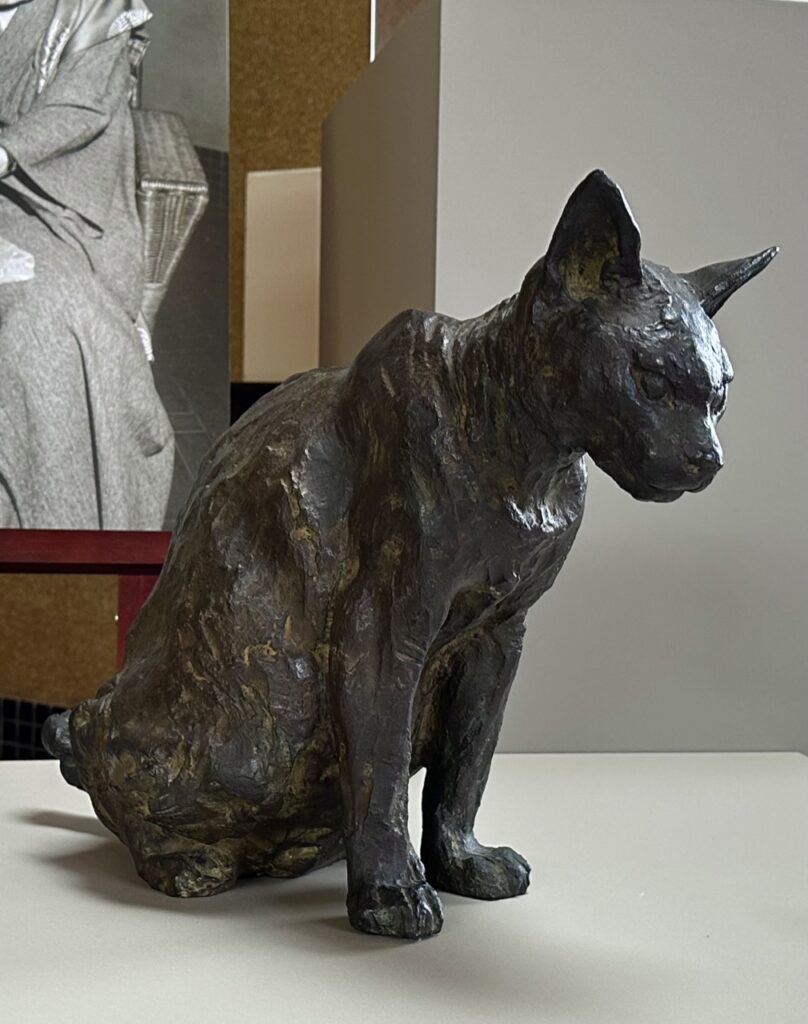
On the other hand, in His later years’ work My Cat is Sick (1958), which depicts his beloved cat, emaciated, with sagging skin and lustrous fur, raising his bottom and enduring the pain, the work lacks the softness seen in his other works and conveys the determination and sadness of an artist who was facing head-on illness and death that would make one want to look away.
For Asakura, cat artworks are different from portrait sculptures that are created under certain constraints upon request; he creates them freely and with a relaxed attitude, following his own creative impulses. Perhaps the reason he chooses to create sculptures of cats, which are not easy to handle as subjects, is due to his honest desire as a cat lover to leave behind precious memories like photographs or diaries. This attitude is also the source of the appeal of Asakura’s cat artworks.
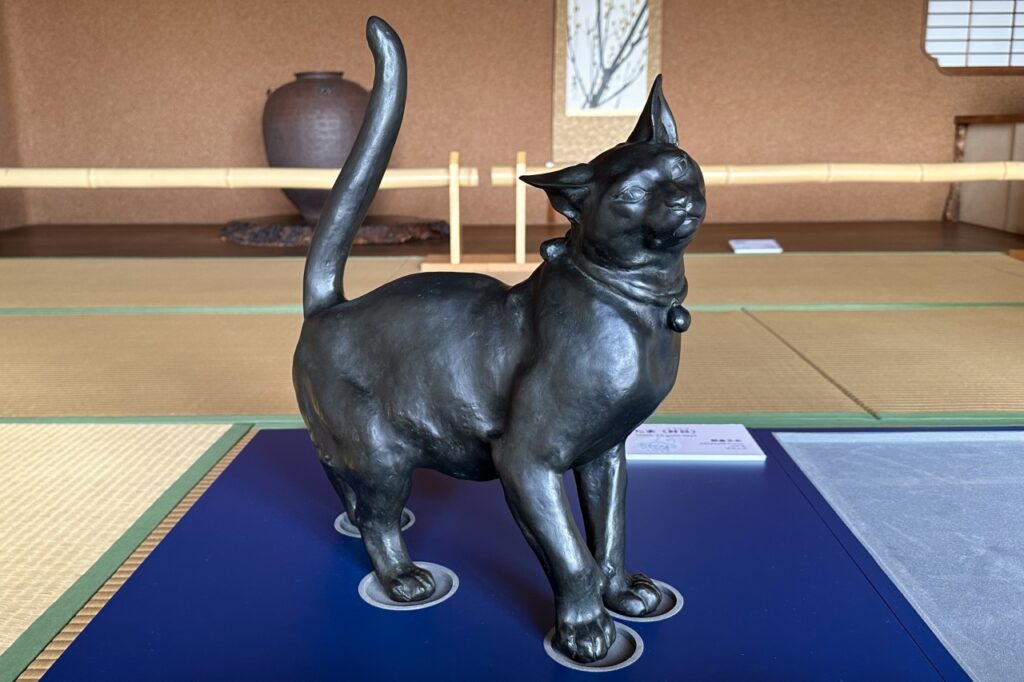

In addition, the venue also screens a 17-minute video introducing the production process of Asakura’s bronze works, known as gas mold casting. It’s easy to explain in a few words: first, create the work from clay, then mold it in plaster to create a prototype, and then turn it into bronze using that. However, the actual work is truly a work of art. It shows how the exhibited works are completed through a mind-bogglingly detailed process, so it’s a must-see for those who have difficulty imagining the casting process.
Regarding what prompted him to hold this exhibition, Tobari said , “More and more people are not familiar with Asakura, so I planned this exhibition to help people become more familiar with Asakura and his works.”
This exhibition, which allows you to fully experience Asakura’s excellent shaping ability, observational skills, and deep love for cats, is the perfect introduction to Asakura’s charm. If you are a cat lover, why not take a look at the lively and heartwarming poses of the cats?
The venue, the Asakura Museum of Sculpture, is a very attractive building, so we would like to introduce some of its highlights.
In 1907, at the age of 24, Asakura graduated from Tokyo School of Fine Arts and established his own studio and residence in Yanaka, which he had designed himself. With the help of top craftsmen, the site was expanded and remodeled repeatedly, and the current Asakura Museum of Sculpture building was completed in 1935. In 2001, the building was registered as a national tangible cultural property, and in 2008, the entire site was designated a national place of scenic beauty as the “Former Asakura Fumio Garden.” The studio building is made of reinforced concrete, and the residence is made of wood in the sukiya-style style, giving it a unique structure, but Asakura’s excellent aesthetic sense allowed the different materials to blend seamlessly together.

The atelier where the artist usually exhibits his works has a ceiling height of 8.5 meters, and the first thing you will notice when you step inside is the open feeling. On the west side of the floor is the 3.78m-tall Statue of Komura Jutaro (1938), but it doesn’t feel oppressive at all.
In theory, an artist’s studio has windows facing the north, but the Asakura Museum of Sculpture’s studio has windows on three sides – north, east, and south – making it extremely bright. The aim is to allow natural light in from all angles to study how sculptures, which are often placed outdoors, look, and the amount of light was adjusted with curtains when the artist was creating the work. The large window at the top of the north side also has a gentle curve to allow light to spread throughout the space without creating strong shadows. The walls are made of warm silk floss, and the sculptor’s attention to detail is evident everywhere.
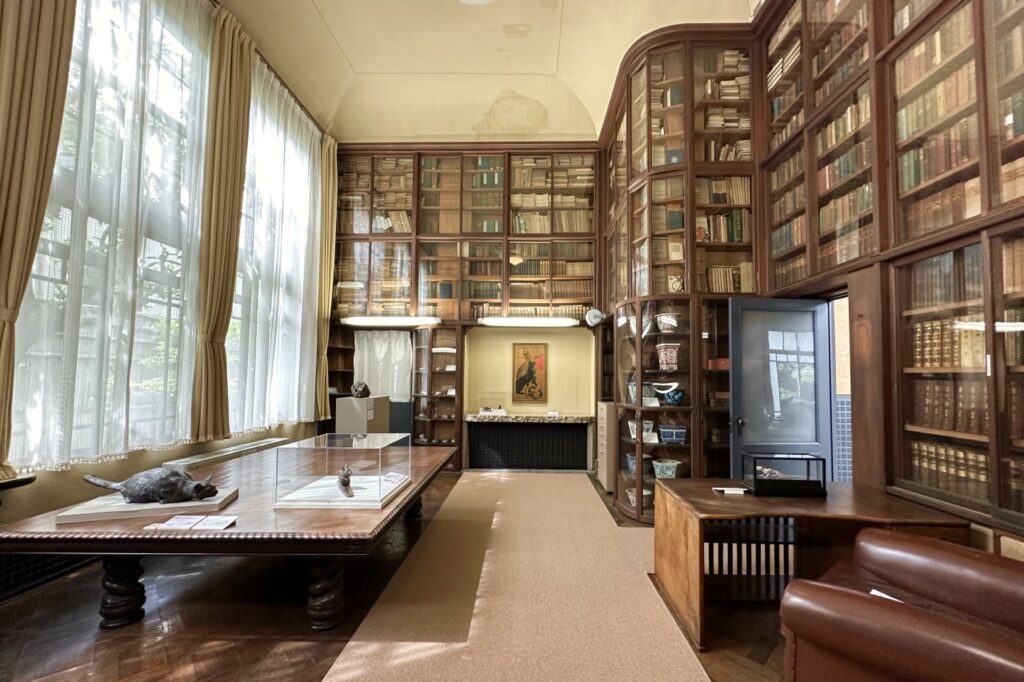
The study adjacent to the studio also has an open ceiling, making it seem like a movie set. Many of the books stored in the bookshelves with glass doors on three sides that reach the ceiling were Western books that belonged to Toru Iwamura, an art critic and Asakura’s teacher during his time at the Tokyo School of Fine Arts. After Iwamura’s death, these valuable materials had been scattered among used bookstores, but Asakura mortgaged his house to raise funds to buy them back.
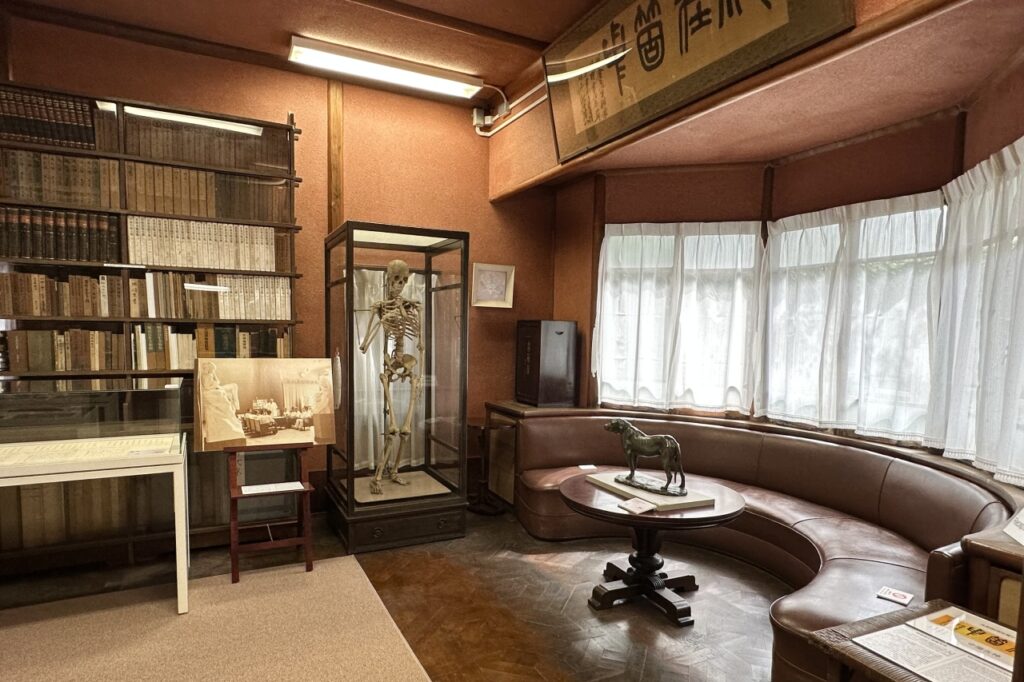
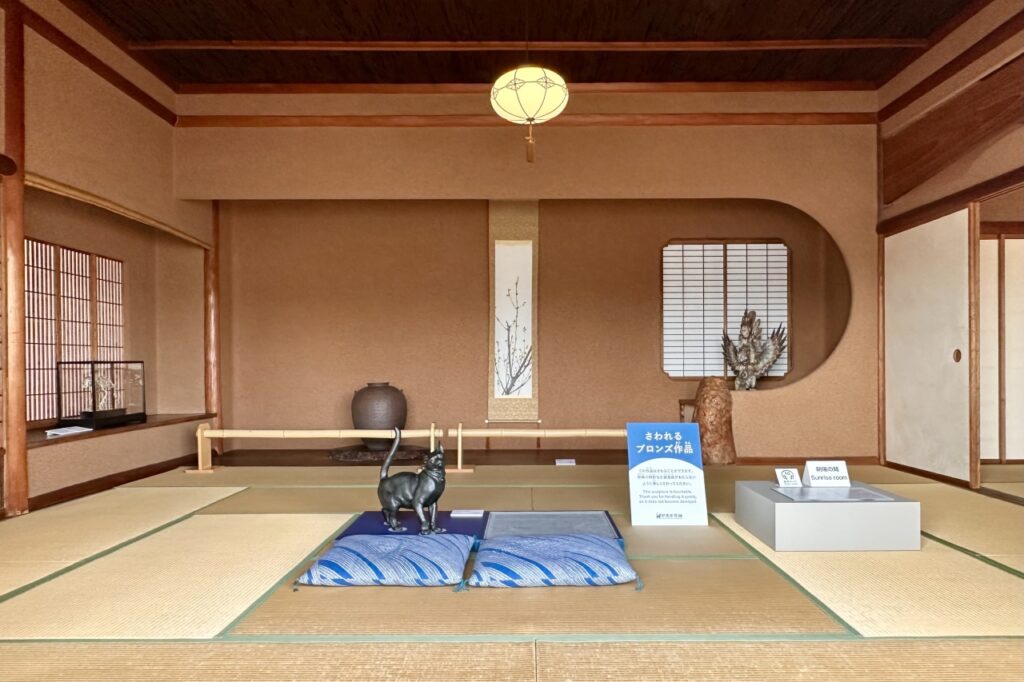
The large hall on the third floor, “Choyo no Ma,” where guests were entertained, is the most prestigious room in the Asakura Museum of Sculpture, and as its name suggests, the morning sun shines in through the windows on the east side. The luxurious Japanese-style furnishings and elegantly shining red walls are made of expensive red agate that has been crushed by hand and applied to the walls. The small amount of obsidian mixed in creates a unique color.
The ceiling is made of Jindai cedar, excavated from the ground in Izu Amagi, with a cedar bark lining. The tokonoma alcove is made of a single piece of pine, and the transom is made of a single piece of paulownia wood, both of which were valuable materials even at the time. There is a sense of playfulness in the deliberate lack of uniformity, and the space exudes Asakura’s aesthetics.
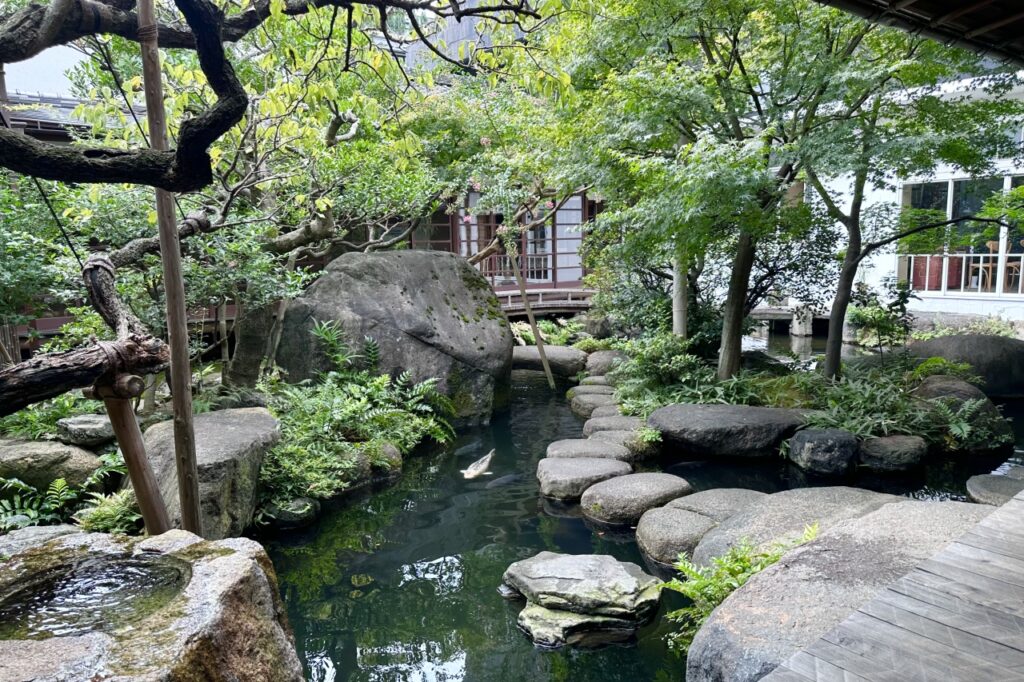
The courtyard, Goten no Ike, is made up of water, huge rocks, and trees. It is a corridor-style structure surrounded by buildings on all four sides, and the beautiful scenery can be enjoyed from any room, making use of the sculptor’s perspective. Asakura used this place for self-reflection, and when he was lost in his way of life or found it difficult to discern the true essence of things, he would look at the clear water to purify his mind and body, and then devote himself to further creation.
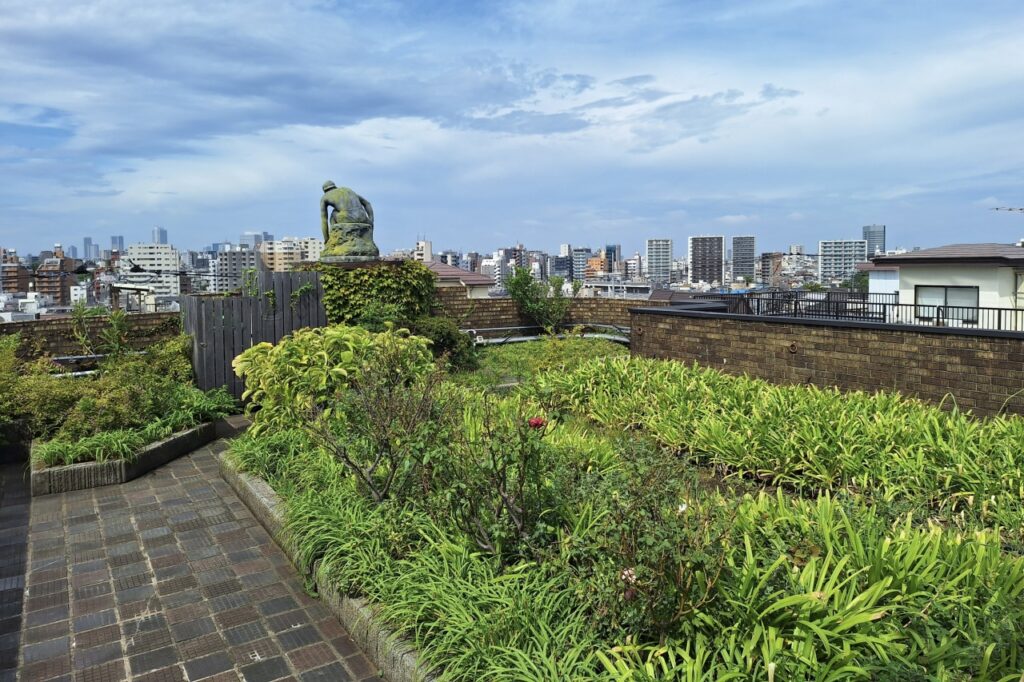
The roof of the atelier building has a garden with olive trees, which is said to be an early example of rooftop greening.
In the past, horticulture training was conducted here as a required subject at the Asakura School of Sculpture. As both gardening and sculpture involve nurturing life in the soil, the purpose of the training was to familiarize the students with the soil through gardening and to develop an eye for objects. Currently, a vegetable garden has been recreated in part, and it has become a place of relaxation where you can enjoy flowers of all seasons.
The male statue “Cannon Put” (1924), placed on the west side of the garden, looks out over the town of Yanaka under a wide sky. You can see the front of the work by looking up from the gate before entering the building, so be sure to look up at the rooftop when you visit.
Summary of the special exhibition “Wonderful Cat Life: Fumio Asakura, Cats, and Sometimes Dogs” commemorating 60 years since his death
| Dates | Saturday, September 14, 2024 – Tuesday, December 24, 2024 |
| venue | Asakura Museum of Sculpture (7-18-10 Yanaka, Taito-ku) |
| Opening hours | 9:30-16:30 (entry until 16:00) |
| Closed Days | Mondays and Thursdays (open on public holidays) |
| Admission fee | Adults: 500 yen / Elementary, middle and high school students: 250 yen |
| Organizer | Taito City Arts and Culture Foundation, Taito City Asakura Museum of Sculpture |
| TEL | 03-3821-4549 |
| Asakura Museum of Sculpture Website | https://www.taitogeibun.net/asakura/ |
*The contents of this article are from the time of coverage. They may differ from the latest information, so please check the official website for details.


